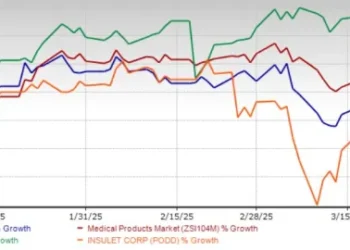A small, wiry cough. A child’s flushed cheeks. A worried parent clutching an ER intake clipboard. These are the moments that mark the beginning of a journey for many families facing the unpredictability of Respiratory Syncytial Virus, more commonly known as RSV.
RSV has become an increasingly prominent topic of discussion in pediatric care, particularly in the wake of seasonal surges that strain hospital resources and spotlight long-standing disparities in access and outcomes. But what often gets lost in the headlines is a deeper understanding of why some children experience more severe disease from RSV than others. What differentiates a routine hospital stay from a life-threatening complication?
As a practicing physician, I’ve seen the quiet anxieties RSV brings into pediatric wards. And as a healthcare system thinker, I see it as a magnifying glass, revealing the layers of medical, environmental, and socioeconomic risk factors that converge in moments of crisis. This article explores those factors — the silent contributors to RSV severity — and the implications they hold for the future of pediatric medicine.
A Common Virus with Uncommon Consequences
RSV is a highly contagious respiratory virus that typically causes cold-like symptoms. For most children, it passes with rest and supportive care. But in some cases, particularly among infants, RSV leads to serious lower respiratory tract infections like bronchiolitis and pneumonia, requiring hospitalization.
While hospitalization rates alone raise alarms, it’s the disproportionate burden of severe disease among certain children that demands closer attention.
Who Gets Severely Ill?
Research increasingly shows that not all children are equally vulnerable. Children with specific underlying medical conditions, including:
- Premature birth
- Chronic lung disease of prematurity
- Congenital heart disease
- Neuromuscular disorders
- Immunodeficiencies
…are at significantly higher risk of developing severe illness from RSV. For these children, what would be a mild cold in a healthy child can become a cascading respiratory crisis.
However, the picture doesn’t stop at medical diagnoses. There’s a social and environmental dimension to RSV outcomes that’s gaining recognition. Children from low-income households, those who live in crowded housing, or who are exposed to secondhand smoke, face higher odds of complications and longer hospital stays.
This convergence of biology and environment is why RSV sits at the intersection of medicine, public health, and social equity.
The Role of Access — or Lack Thereof
One of the most profound risk factors, though less frequently acknowledged, is access to preventive care and timely treatment. In underserved communities, routine pediatric visits may be missed, and early signs of respiratory distress might go unnoticed until hospitalization becomes inevitable.
We also must consider geographic disparities. In rural or medically underserved areas, specialized pediatric care is often far away, delaying critical interventions. Many children arrive at hospitals only after home remedies have failed and symptoms have progressed dangerously.
As healthcare providers, we know the early hours of respiratory illness matter — especially in RSV cases. But too often, those early hours pass without adequate care.
The Compounding Burden of Comorbidities
The presence of comorbid conditions further complicates outcomes. Children with chronic conditions already live in a delicate physiological balance. RSV can tip that balance quickly. For example:
- A child with asthma may face a higher risk of bronchospasms, exacerbating respiratory distress.
- Children with neuromuscular diseases might lack the muscle strength to cough effectively, allowing mucus to accumulate and worsen infection.
- Those with immunodeficiencies, whether congenital or acquired, struggle to mount a defense against the virus.
These interactions are not always linear or predictable, which makes risk stratification in pediatric RSV cases a complex, ever-evolving process.
Vaccination and Prevention: A Glimmer of Hope
The recent development of RSV immunizations, particularly monoclonal antibody therapies like nirsevimab, provides a glimmer of hope for prevention. However, access and uptake remain uneven.
High-risk infants — particularly those born prematurely or with chronic lung disease — are eligible for preventive treatment. Yet, in practice, insurance coverage issues, clinician hesitancy, and lack of parental awareness often mean these therapies don’t reach the children who need them most.
Long-tail keywords like “RSV vaccine for infants with chronic conditions” and “monoclonal antibody RSV prevention in newborns” reflect growing search interest — and growing confusion — among parents trying to navigate these emerging options.
A Call for Data-Informed, Community-Centered Solutions
What RSV teaches us — year after year — is that biology and circumstance collide in unpredictable ways. It’s not enough to identify high-risk children retrospectively. We need proactive, community-embedded strategies to recognize vulnerability before a hospital bed becomes necessary.
That starts with better surveillance — not just of viral spread, but of social risk indicators. Housing conditions, caregiver health literacy, and barriers to care must be included in our understanding of pediatric risk.
And it requires cross-sector collaboration. Pediatricians, public health officials, community health workers, and social service agencies must build systems that treat health not as an isolated outcome, but as the product of many intersecting forces.
Reimagining the Pediatric Healthcare Landscape
The story of RSV is more than just a story of viral infection. It is a cautionary tale of systemic gaps in how we care for our most vulnerable populations.
Yes, RSV is biologically driven. But its most devastating consequences arise where medicine meets inequity. When children suffer due to treatable conditions made worse by social neglect, the virus itself becomes only a piece of the problem.
In the long run, the real solutions lie not just in antivirals or vaccines, but in rethinking how we identify and support vulnerable children — long before they reach the hospital doors.
Final Thoughts
As RSV season continues to strain pediatric hospitals, we must remember that the goal isn’t just treatment — it’s prevention, preparation, and understanding. Every child deserves the chance to weather illness safely. But achieving that means we must start seeing the full picture of risk, not just the symptoms.















